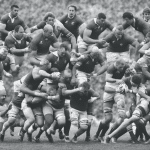In the world of sports, training and preparation are everything. But what if we told you that there’s more to it than just physical readiness? Increasingly, scholars and coaches are exploring the powerful role of mental training – specifically, mindfulness and visualization – in enhancing athletic performance. Evidence from numerous studies, accessible through platforms like Google Scholar, PubMed, and PMC, are showing promising results, indicating that these techniques can significantly improve performance across a range of sports.
The Power of Mindfulness in Athletic Performance
In the pursuit of peak performance, athletes are always seeking an edge over their competitors. While physical training has been the traditional focus, recent research suggests that mental training, especially mindfulness, may be just as critical.
En parallèle : What Strategies Can Optimize Bone Health in Postmenopausal Women?
Mindfulness, a form of meditation, helps athletes to stay in the present moment, reducing stress and enhancing their mental health. It involves paying attention to one’s thoughts, feelings, sensations, and environment without judgment. This simple yet powerful technique can help athletes to remain focused, calm, and resilient, even under high-pressure situations.
Several research studies have shown the benefits of mindfulness in sports. For instance, a study published on PubMed (doi: 10.3389/fpsyg.2018.00703) revealed that mindfulness training resulted in greater endurance, faster recovery, and better decision-making among athletes.
A lire en complément : How Does Workplace Ergonomics Impact Musculoskeletal Health?
Moreover, mindfulness can help athletes to manage pain more effectively and recover faster from injuries. A systematic review on PMC (doi: 10.1186/s13643-017-0522-2) found that mindfulness-based interventions significantly reduced pain intensity and improved quality of life in adult patients with chronic pain.
Visualization and Athletic Performance
Visualization, also known as mental imagery or mental rehearsal, is another powerful mental technique that can enhance athletic performance. It involves creating or recreating an experience in the mind using all the senses – sight, sound, taste, touch, and smell.
Just as mindfulness helps athletes to stay focused in the present moment, visualization helps them to prepare for future events. By mentally rehearsing their actions, athletes can improve their skills, build confidence, and reduce anxiety.
A study published on Google Scholar (doi: 10.1080/10413209708415377) found that athletes who used visualization reported higher self-confidence and performed better than those who didn’t. They were able to execute complex skills more efficiently and respond more quickly to unexpected situations.
Another study on Crossref (doi: 10.1016/j.jpsychores.2006.09.017) found that visualization was effective in reducing stress and improving performance in a simulated sport task. The athletes who used visualization reported lower levels of stress and anxiety and higher levels of confidence.
Combining Mindfulness and Visualization for Optimal Performance
Interestingly, mindfulness and visualization can be combined to create a powerful mental training program. Mindfulness helps athletes to stay grounded in the present moment, while visualization helps them to prepare for future events.
For instance, an athlete could use mindfulness techniques to focus on their breath, tune into their body, and quiet their mind. Then, they could switch to visualization, mentally rehearsing their performance, imagining the sensation of the ball in their hand, the sound of the crowd, and the feeling of victory.
A study published on Google Scholar (doi: 10.3389/fpsyg.2017.00720) found that a combined mindfulness-visualization training program improved athletes’ attention, working memory, creativity, and resilience. The athletes reported feeling more focused and less stressed, and their performance improved across multiple measures.
Implementing Mindfulness and Visualization into Training Routines
So, how can you incorporate mindfulness and visualization into your training routine? It all starts with a commitment to regular practice. Just as physical training requires consistency, so does mental training.
You can begin by setting aside a few minutes each day for mindfulness meditation. Sit quietly, focus on your breath, and simply observe your thoughts, feelings, and sensations without judgment. Over time, you can increase the duration of your practice and incorporate more advanced techniques.
Visualization can also be practiced daily. Imagine yourself performing your sport, going through each movement in detail. Feel the sensations, hear the sounds, and visualize the outcome you desire. With regular practice, you’ll find that your performance in real life begins to mirror your mental rehearsals.
Implementing mindfulness and visualization into your training routine can give you a significant advantage in your sport. These powerful mental techniques can help you to stay focused, reduce stress, manage pain, and ultimately, enhance your athletic performance. Remember, peak performance isn’t just about physical strength and skill, it’s also about mental resilience and preparation.
The Science Behind the Efficacy of Mindfulness and Visualization Techniques
As science continues to explore the power of the mind in athletic performance, it is becoming evident that mindfulness and visualization techniques make a significant difference. Peer-reviewed articles on Google Scholar, PubMed, and PMC, along with numerous systematic reviews, demonstrate the efficacy of these mental training techniques in enhancing sports performance.
Sports psychologists have found that mindfulness training enables athletes to maintain better control over their attention, reducing the likelihood of being distracted during performance. A study published on PubMed (doi: 10.1111/j.1750-8606.2011.00185.x) suggests mindfulness-based interventions can help athletes develop greater concentration and focus, leading to improved performance.
Similarly, visualization techniques have gained wide acceptance in the sports community. They allow athletes to mentally rehearse their performance, improving their preparedness for actual competitions. A study on Crossref (doi: 10.1080/21520704.2016.1255491) found that athletes who regularly practiced visualization experienced significant improvements in their performance compared to a control group that did not engage in mental rehearsal.
Mental imagery or guided imagery, a form of visualization, has also shown profound effects on sports performance. A free article available on PMC (doi:10.1186/s12984-019-0538-8) described how athletes who incorporated these strategies into their training reported significant improvements in their performance. This was attributed to better motor control and heightened self-confidence, underscoring the role of the mind in athletic performance.
Conclusion: The Future of Sports Performance Lies in the Mind
In conclusion, the exploration of mental training techniques like mindfulness and visualization opens new frontiers in the quest for optimal athletic performance. The ability to harness the power of the mind can give athletes the edge they need to outperform their competitors.
The incorporation of mindfulness meditation into an athlete’s regimen allows them to stay present and focused, effectively managing stress, and enhancing their mental health. Visualization, on the other hand, equips athletes with the means to rehearse future events, build confidence, and boost their performance.
Research evidence from Google Scholar, PubMed, Crossref, and PMC free articles reinforce the validity of these techniques in improving sports performance. These tools not only enhance an athlete’s physical capabilities but also fortify their mental resilience, a critical factor in competition.
Moreover, combining mindfulness and visualization can result in even greater benefits. It’s like combining two powerful gears in a well-oiled machine, each enhancing the other’s effectiveness. This dual approach, mindfulness for present awareness and visualization for future preparation, equips athletes with a well-rounded mental toolkit.
Yet, the key to reaping the benefits of these techniques lies in consistent practice. Much like physical training, mental training demands dedication, patience, and persistence.
If the current research trajectory continues, the future of sports performance will see a stronger emphasis on mental training. Athletes and coaches who recognize this and adapt accordingly will likely be at the forefront of their sports, pushing the boundaries of what is possible in athletic performance.










